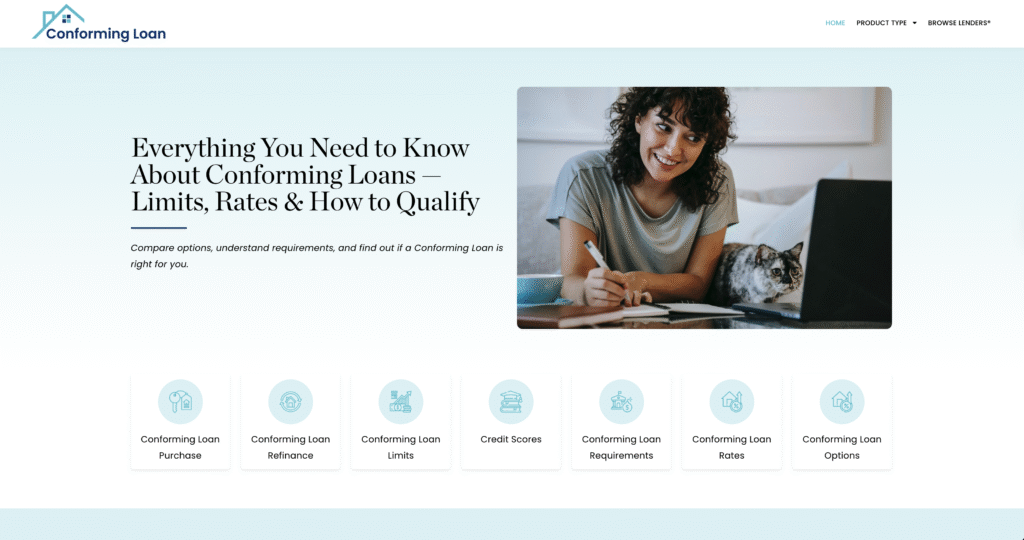Cash Flow vs. Credit Usage Simulator: Visualize How Spending Behavior Impacts Your Utilization Ratio and Middle Credit Score®
For many consumers, the most frustrating part of managing credit is the mystery behind score fluctuations. You pay on time, avoid opening new accounts, and still—your score drops. Or you make a large payment and expect a boost, but the improvement is small or delayed. Most of the confusion stems from a misunderstood but critically important factor in credit scoring: credit utilization. Specifically, how your use of available credit interacts with your real-time cash flow. The Cash Flow vs. Credit Usage Simulator is designed to remove the guesswork. It gives you a clear, visual representation of how your spending behavior and bill payment timing influence your Middle Credit Score®, and it allows you to make more informed, strategic choices about how and when you use credit.
Utilization accounts for roughly 30% of your credit score, making it the second most impactful factor after payment history. Yet many people don’t realize that credit card balances are not scored based on your due date—but rather on the statement closing date, which is typically about 3–5 days before your payment is due. That means even if you pay your balance in full after your statement, your score could still reflect a high utilization ratio if you were using a large portion of your limit. For consumers who rely on credit cards for everyday purchases—and then pay them off regularly—this quirk can create confusion and lead to unintentional score suppression. The Cash Flow vs. Credit Usage Simulator helps you understand this timing trap, and teaches you how to adjust your payment habits without necessarily spending less.
This simulator is especially helpful for consumers who experience income variability, such as freelancers, gig workers, small business owners, or part-time employees. When your income fluctuates, you may rely more heavily on credit during lean weeks and pay it down during high-earning months. But if that usage pattern coincides with the wrong statement dates—or if you shift balances between cards to juggle bills—you could end up with high utilization reported across multiple accounts, damaging your score even when you’re making payments. The simulator allows you to test various usage scenarios—how much you charge to a card, how early you pay, how much of your paycheck you apply to debt—and instantly see the predicted effect on your utilization ratio and Middle Credit Score®.
This kind of feedback is powerful. It empowers you to reframe your approach to credit—not as a reactive tool, but as a strategic asset. It teaches you that score improvement isn’t always about paying more, but about paying smarter. For example, if your simulator shows that reducing your card usage from 70% to 28% results in a potential 20-point score increase, you can prioritize that payoff over a low-interest loan that may not impact your score as much. If the simulation reveals that paying your card one week earlier reduces your reported utilization to under 10%, you can simply shift your payment schedule and see score gains without changing your lifestyle. These small, precise adjustments—when guided by data—make a significant impact over time.
Perhaps most importantly, the simulator bridges the gap between budgeting and credit behavior. It forces you to see how your daily spending choices—on groceries, gas, streaming subscriptions, or online purchases—add up in terms of score consequences. It shows you how relying on credit to fill budget gaps might help in the moment, but can hurt you when it matters most, like before applying for a loan or refinancing your mortgage. The visual feedback makes abstract credit rules tangible. And that’s where real behavior change begins—not from fear, but from understanding. When you can see how a $150 difference in timing or usage affects your credit profile, you’re far more likely to plan ahead, avoid last-minute charges, and maintain a financial rhythm that supports your long-term goals.
In Part 2 of this guide, we’ll walk through how to use the Cash Flow vs. Credit Usage Simulator step-by-step. You’ll learn how to enter your current balances, test different usage and payment strategies, and generate side-by-side comparisons to see which approach best supports your Middle Credit Score®. We’ll also cover how to sync the simulator with your budget, time your payments to maximize score growth, and avoid utilization spikes during critical financial windows—like mortgage applications or loan renewals. With the right tools and insights, you can finally stop guessing and start leveraging your credit with intention.
Step-by-Step Breakdown
The Cash Flow vs. Credit Usage Simulator helps you understand how your everyday spending patterns, payment timing, and card balances directly affect your credit utilization and ultimately your Middle Credit Score®. Unlike traditional budget tools that only track spending, this simulator models how the timing of payments and the method of spending (cash vs. credit) influence the reported balances that determine your score. Here’s how to use it step by step.
Step 1: Gather Current Credit Card Data
Start by listing all of your revolving accounts with:
- Current balance
- Credit limit
- Statement closing date
- Payment due date
| Card | Balance | Limit | Utilization % | Statement Date | Due Date |
|---|---|---|---|---|---|
| Card A | $850 | $1,000 | 85% | 15th of month | 21st |
| Card B | $400 | $1,200 | 33% | 12th of month | 6th (next month) |
| Card C | $0 | $2,000 | 0% | 10th of month | 5th (next month) |
📌 Focus on balances reported to the bureaus, not necessarily what you pay in full.
Step 2: Track Weekly Cash Flow Behavior
For each week in the month, track your net inflow (income) and outflow (expenses).
| Week | Income | Expenses | Net Cash | Credit Usage |
|---|---|---|---|---|
| 1 | $1,200 | $950 | +$250 | $150 (Card A) |
| 2 | $0 | $400 | -$400 | $300 (Card B) |
| 3 | $800 | $700 | +$100 | $100 (Cash) |
| 4 | $0 | $300 | -$300 | $150 (Card A) |
By overlaying this with your credit card activity, you can simulate how different spending decisions or timing of payments impact your overall credit profile.
Step 3: Simulate Mid-Cycle Paydowns to Lower Utilization
Now adjust for payment timing.
For each card, estimate your reported balance at the statement closing date (not payment due date). Then model:
- What happens if you pay before the statement date?
- What happens if you reduce spending 10–14 days prior to statement?
| Card | Simulated Early Paydown | New Reported Balance | Utilization % | Credit Score Impact |
|---|---|---|---|---|
| A | $500 paid before 15th | $350 | 35% | Score may increase |
| B | $200 paid before 12th | $200 | 17% | Minimal impact |
📌 The simulator shows how early payments lower reported balances and help scores before a lender pulls credit.
Step 4: Model the Impact of Credit Usage Shifts
Test different behaviors:
Scenario 1 – Relying on credit all month:
- Total card usage: $1,500
- Payments made: $1,500
- Reported balances: $1,200
- Avg. utilization: 60%
- Likely Score Effect: ↓ (high utilization)
Scenario 2 – Paying down early & limiting credit use after week 2:
- Total card usage: $1,000
- Payments made: $1,000
- Reported balances: $300
- Avg. utilization: 12%
- Likely Score Effect: ↑ (low utilization)
This side-by-side model helps you decide when and how to use your cards—not just how much.
Step 5: Visualize Credit Utilization Trends
Use a chart to simulate your utilization over the next 3 months based on expected income, spending, and payment habits.
| Month | Card A Utilization | Card B Utilization | Total Avg. Utilization | Projected Score |
|---|---|---|---|---|
| Jan | 72% | 35% | 53% | 645 |
| Feb | 41% | 21% | 31% | 663 |
| Mar | 22% | 10% | 16% | 685 |
📌 Keep total utilization under 30%, and individual cards under 50% at all times to see reliable improvement.
Step 6: Set Cash Flow Rules to Protect Credit
Build smart rules based on your simulator’s insights:
| Rule | Purpose |
|---|---|
| No card usage in the 10 days before statement date | Keep balances low for reporting |
| Schedule payments 3–5 days before statement closes | Ensure early payment processing |
| Limit weekly credit spending to 25% of limit | Prevent sudden spikes in utilization |
| Auto-transfer to savings every payday | Reduces mid-month credit reliance |
Step 7: Model Emergency Credit Use and Recovery Plan
Simulate what happens if you need to use credit in a tight month, and build your recovery timeline.
| Emergency Usage Scenario | Amount Charged | Card Limit | Utilization % | Recovery Plan | Months to Recover |
|---|---|---|---|---|---|
| Medical Bill on Card A | $750 | $1,000 | 75% | Pay $250/month early | 3 months |
| Car Repair on Card B | $600 | $1,200 | 50% | Pay $200/month + restrict use | 3 months |
📌 The simulator helps you plan when to recover so the score rebound aligns with your financial goals (e.g., refinance window, pre-approval).
Step 8: Integrate with Your Budget for Seamless Use
Link simulator insights into your main budget categories:
| Budget Category | Adjusted for Simulator | Notes |
|---|---|---|
| Credit Card Paydown | Increased by $100/mo | Based on score impact analysis |
| Groceries (credit use) | Switched to debit/cash | Keeps Card A below 30% |
| Emergency Fund Saving | Prioritized | Reduces need for credit in crises |
This bridges the gap between spending and credit behavior.
Step 9: Sync with Score Monitoring for Real-Time Feedback
Use your simulator data alongside score monitoring tools like:
- Experian (shows Middle Score®)
- MyFICO (if applying for a mortgage soon)
- Credit Karma (for utilization tracking)
Review monthly:
| Month | Avg. Utilization | Score | Major Change Made |
|---|---|---|---|
| Jan | 54% | 642 | No early payments |
| Feb | 28% | 664 | Paid before statement dates |
| Mar | 15% | 685 | Reduced card use in Week 4 |
Step 10: Simulate for Credit Goal Alignment
Use the simulator to align with major goals:
| Goal | Target Utilization | Timing Strategy |
|---|---|---|
| Mortgage Pre-Approval | <10% on all cards | Start 60 days prior |
| Auto Loan Refinance | <30% on total debt | Check balance 30 days prior |
| Credit Limit Increase | <10% on request card | Reduce use, wait 90 days |
| New Rental Application | <50% overall | Pay 2 cards to zero |
Final Score Optimization Summary
| Behavior Change | Avg. Score Impact (Over 90 Days) |
|---|---|
| Paying 5 days before statement | +15–30 points |
| Reducing one card below 30% | +10–20 points |
| Lowering total usage under 10% | +20–40 points |
| Avoiding new charges post-payment | +5–15 points |
Final Takeaways
✅ Timing and usage both impact utilization
✅ Use the simulator monthly to stay score-aware
✅ Focus on credit reporting, not just paying
✅ Sync payment dates with income, not due dates
✅ Build financial behavior that protects your credit before the bureaus report it
Middle Credit Score® Support Center
Browse Lenders® – Speak with a Lending Expert






